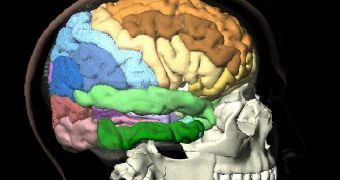According to a new scientific study, it would appear that the human brain is in the habit of processing visual and audio information in similar manners, as in it uses the same type of “encryption” for both types of information. The new study was conducted using functional Magnetic Resonance Imaging (fMRI), a non-invasive imaging technique that can analyze blood flow patterns in the brain, and determine which areas respond (light-up) to a certain stimuli, and which don't.
In the current experimental set-up, the method was used to determine how people reacted to sounds coming from musical instruments, to words from conversations, and from noises generated by the environment. “It turns out that the brain uses the same strategy to encode sounds that it uses to encode different images. This may make it easier for people to combine sounds and images that belong to the same object, such as the dribbling of a basketball,” explains Universite de Montreal psychology professor Marc Schonwiesner, who was also the lead author of the new study.
The expert says that the goal of researchers will in the future be to determine exactly how sound and visual input information is sorted through by the brain, and assigned to specific categories. For instance, scientists want to know exactly how we can distinguish powerful drum beats from symphonic orchestra chords, or how we can tell when people around us speak French, German or English. The newest finds are published in this week's online issue of the journal Proceedings of the National Academy of Sciences (PNAS).
“Our goal is to disentangle exactly how the brain extracts these different types of sounds. This is a step [that] may eventually let us reconstruct a song that a person has heard from according to the activity pattern in their brain,” Schonwiesner adds. When experts become able to “reconstruct a song a person has heard according to an fMRI reading, we [won't be] far off to being able to record brain patterns during sleep and reconstruct dreams,” he states. “That would be really cool, although this possibility is decades of research away," the professor concludes, quoted by LiveScience.

 14 DAY TRIAL //
14 DAY TRIAL //